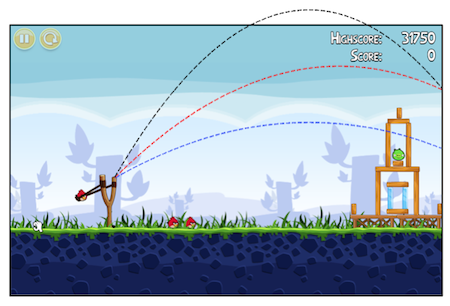Projectile and Kinetic energy combined
 A projectile thrown from horizontal has half the kinetic energy when it is at
than when it is at
.
A projectile thrown from horizontal has half the kinetic energy when it is at
than when it is at
.
If the angle of projection can be written as , find the value of .
The answer is 2.
This section requires Javascript.
You are seeing this because something didn't load right. We suggest you, (a) try
refreshing the page, (b) enabling javascript if it is disabled on your browser and,
finally, (c)
loading the
non-javascript version of this page
. We're sorry about the hassle.
Consider the initial velocity of projection of the body to be v. Hence, the initial kinetic energy is given by 0.5m(v)^2. Calculate the potential energy of the body at the given heights separately, according to the relation P.E. = mgh. Since the total energy of the body is conserved, the kinetic energy of the body at these two heights can be obtained by subtracting the corresponding values of the potential energy values from the initial kinetic energy value. According to the problem, the kinetic energy at height (3/4)H is half of the kinetic energy at (1/4)H, where H denotes the maximum height. Frame the equation based on this criterion. The mass will get cancelled out, and in the end, there will be the expression: v = (2.5gH)^0.5 Now put the maximum height in terms of the initial velocity, which states H = [u^2(sinw)^2]/2g, where w is the angle of projection made with the horizontal. The value of sinw will come out to be approximately 0.89443. Apply inverse circular operation to get the value of w, calculate tanw, which is 1.999568, approximately equal to 2, which is the answer.